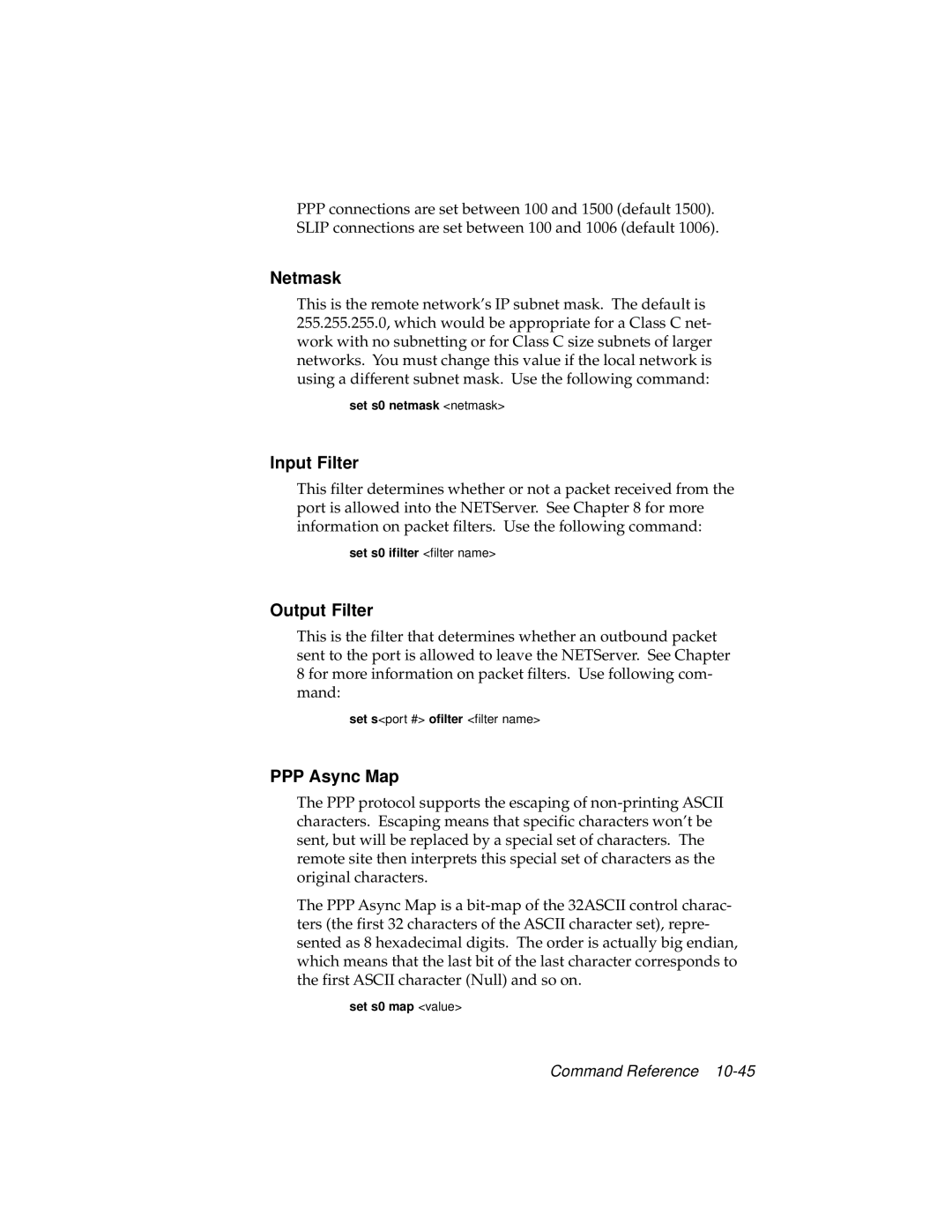PPPconnections are set between 100 and 1500 (default 1500). SLIP connections are set between 100 and 1006 (default 1006).
Netmask
This is the remote network’s IP subnet mask. The default is 255.255.255.0, which would be appropriate for a Class C net- work with no subnetting or for Class C size subnets of larger networks. You must change this value if the local network is using a different subnet mask. Use the following command:
set s0 netmask <netmask>
Input Filter
This filter determines whether or not a packet received from the port is allowed into the NETServer. See Chapter 8 for more information on packet filters. Use the following command:
set s0 ifilter <filter name>
Output Filter
This is the filter that determines whether an outbound packet sent to the port is allowed to leave the NETServer. See Chapter 8 for more information on packet filters. Use following com- mand:
set s<port #> ofilter <filter name>
PPP Async Map
The PPP protocol supports the escaping of
The PPP Async Map is a
set s0 map <value>
